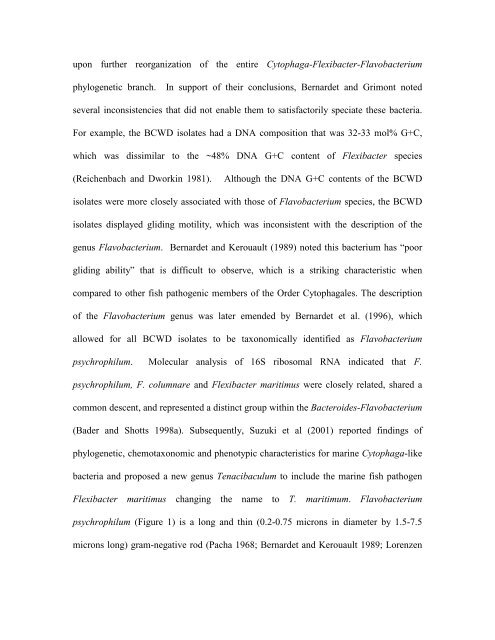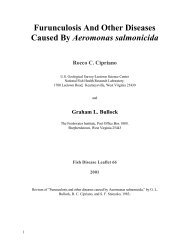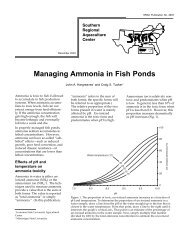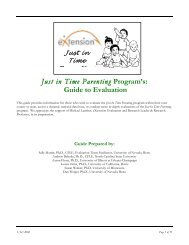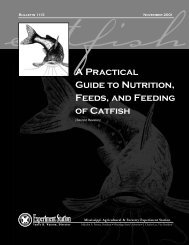Flavobacterium psychrophilum, cause of ... - cop.eXtension.org
Flavobacterium psychrophilum, cause of ... - cop.eXtension.org
Flavobacterium psychrophilum, cause of ... - cop.eXtension.org
You also want an ePaper? Increase the reach of your titles
YUMPU automatically turns print PDFs into web optimized ePapers that Google loves.
upon further re<strong>org</strong>anization <strong>of</strong> the entire Cytophaga-Flexibacter-<strong>Flavobacterium</strong><br />
phylogenetic branch. In support <strong>of</strong> their conclusions, Bernardet and Grimont noted<br />
several inconsistencies that did not enable them to satisfactorily speciate these bacteria.<br />
For example, the BCWD isolates had a DNA composition that was 32-33 mol% G+C,<br />
which was dissimilar to the ~48% DNA G+C content <strong>of</strong> Flexibacter species<br />
(Reichenbach and Dworkin 1981). Although the DNA G+C contents <strong>of</strong> the BCWD<br />
isolates were more closely associated with those <strong>of</strong> <strong>Flavobacterium</strong> species, the BCWD<br />
isolates displayed gliding motility, which was inconsistent with the description <strong>of</strong> the<br />
genus <strong>Flavobacterium</strong>. Bernardet and Kerouault (1989) noted this bacterium has “poor<br />
gliding ability” that is difficult to observe, which is a striking characteristic when<br />
compared to other fish pathogenic members <strong>of</strong> the Order Cytophagales. The description<br />
<strong>of</strong> the <strong>Flavobacterium</strong> genus was later emended by Bernardet et al. (1996), which<br />
allowed for all BCWD isolates to be taxonomically identified as <strong>Flavobacterium</strong><br />
<strong>psychrophilum</strong>. Molecular analysis <strong>of</strong> 16S ribosomal RNA indicated that F.<br />
<strong>psychrophilum</strong>, F. columnare and Flexibacter maritimus were closely related, shared a<br />
common descent, and represented a distinct group within the Bacteroides-<strong>Flavobacterium</strong><br />
(Bader and Shotts 1998a). Subsequently, Suzuki et al (2001) reported findings <strong>of</strong><br />
phylogenetic, chemotaxonomic and phenotypic characteristics for marine Cytophaga-like<br />
bacteria and proposed a new genus Tenacibaculum to include the marine fish pathogen<br />
Flexibacter maritimus changing the name to T. maritimum. <strong>Flavobacterium</strong><br />
<strong>psychrophilum</strong> (Figure 1) is a long and thin (0.2-0.75 microns in diameter by 1.5-7.5<br />
microns long) gram-negative rod (Pacha 1968; Bernardet and Kerouault 1989; Lorenzen


